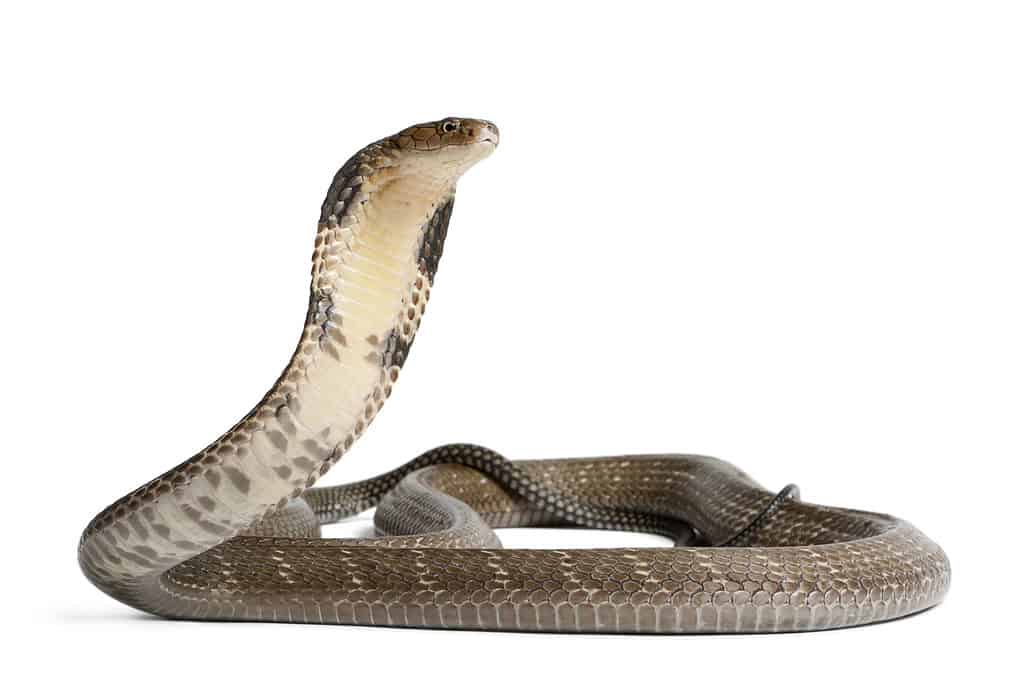Handling or catching any species of snake, let alone a cobra, is an impressive feat. In this video, a girl catches a cobra charging after her with her bare hands. Sitting on a towel and soaking up the sun, a girl watches as a massive cobra approaches her. The snake is swift, as it slithers rapidly out of the bushes toward her. Without fear, the girl grabs the snake accurately and quickly with one hand. She raises the cobra above her head and throws the snake as far away from her as she can.
While this video might look real, it’s fake, and there are a few key clues that reveal it to be so. First, the shadow of a man behind her shows a fishing rod. Therefore, the snake must have been attached to the rod and reeled in toward the girl to scare her. Furthermore, the snake is fake, too. The cobra charges at the girl in a straight line. This movement is inconsistent with the movement patterns of most snakes, which slither in an “S” shape.
The video garnered plenty of attention with more than a million views as of 2018. However, the creator of the video eventually admitted to the video being fake. He claimed that he had been trying to play a prank on his sister, who was the subject of the video. Shockingly, she caught the snake rather than being afraid and running away. The creator revealed that he had used a fishing line to reel in a fake rubber snake for the prank. Verdict: Fake!

The cobra’s hood is likely its most noteworthy feature.
©Eric Isselee/Shutterstock.com
Background on Cobras
The term “cobra” encompasses a vast amount of venomous snake species. In fact, a cobra is not a singular type of snake, and some cobras are barely related to other types of cobras. These snakes are native to Africa, Asia, and some Southeast Asian islands. What people recognize most about cobras are their distinctive hood. The hood of these snakes is easily identified, and this characteristic is often seen in various forms of media. For instance, popular movies like Rambo and Casino Royale include depictions of the cobra.
Cobras are high venomous creatures, whose poison can be fatal. Their venom is released through their bite, and it can cause respiratory difficulty through the release of neurotoxins. Most fatalities that result from the venom of a cobra occur in South Asia and Southeast Asia. The largest species of cobra is the king cobra. King cobras are found in countries like India, the Philippines, and Indonesia. King cobras can measure up to 18 feet, but the average maximum length for a king cobra lies around 12 feet.
Up Next
- The Largest King Cobra in the World
- This Curious Monkey Can’t Help but Grab a Black Cobra by the Tail
- See this Mongoose Deliver the Final Blow to a Massive King Cobra
The photo featured at the top of this post is © Skynavin/Shutterstock.com
Discover the "Monster" Snake 5X Bigger than an Anaconda
Every day A-Z Animals sends out some of the most incredible facts in the world from our free newsletter. Want to discover the 10 most beautiful snakes in the world, a "snake island" where you're never more than 3 feet from danger, or a "monster" snake 5X larger than an anaconda? Then sign up right now and you'll start receiving our daily newsletter absolutely free.
Sources
- Dan Evon, Available here: https://www.snopes.com/fact-check/did-a-sunbather-catch-a-cobra-bare-hands/
- Britannica, Available here: https://www.britannica.com/animal/cobra-snake
FAQs (Frequently Asked Questions)
What kind of snake is a cobra?
A cobra defines a group of snake species that are considered highly venomous.
Where do cobras live?
Cobras can be found in Asia and Africa.
Why can cobra bites become fatal?
The bite of a cobra releases venom with neurotoxins that can cause difficulty breathing.
Thank you for reading! Have some feedback for us? Contact the AZ Animals editorial team.






